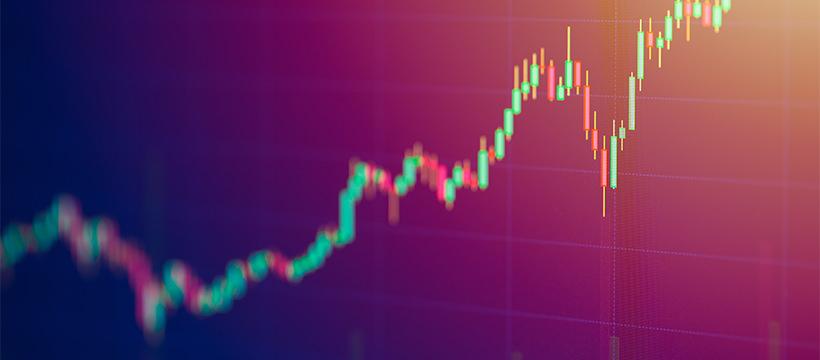Forex Trading: Impact of Purchase Manager Index (PMI)
April 26, 2019

The Purchase Manager Index, otherwise known by the acronym PMI, is one of the most important market movers for Forex Trading, as well as for trading as a whole and, in general, for understanding the state of a country's or geographic area's real economy.
It is therefore essential, for the purposes of a profitable Forex Trading activity, to understand what this indicator consists of and how it impacts prices.
In the following article, we will provide all the necessary information in this regard, starting from the calculation method to the ways in which it influences the currency market.
What is the PMI
Before providing a clear definition of PMI, it is worth making a small clarification. In most of the economic calendars provided by Italian platforms, it is indicated with the Italian translation (not literal), i.e., Purchasing Managers' Index. Among other things, this expression is one of the keys to understanding its real meaning.
Definition of PMI
The PMI is a real economy indicator that summarizes, with a simple value, the health status of a productive sector. It is the point of reference for those who want to have an overview of the condition of an economy. In some ways, it is even more important than GDP and the unemployment rate.
Basically, the PMI is the result of a survey conducted on "purchasing managers," i.e., those figures within an organization who manage both outgoing and incoming orders. Very often, in small and medium-sized enterprises, these figures coincide with the CEO or the owner of the business.
The survey consists of some questions that, in various ways, concern the degree of activity of the company: number of employees, production trend, orders received, prices, future expectations.
The survey serves as the basis for developing an index, which is expressed in absolute numerical terms. The index resulting from the survey ranges between 0 and 100. The value of 50 is very important as it represents the watershed between the condition of recession and the condition of expansion.
In the vast majority of cases, since managers have their finger on the pulse of the real situation of an economy, a consistent decline in the PMI anticipates a period of economic slowdown, rather than stagnation or outright recession.
Types of PMI
There are various types of PMI. There is, for example, the generic or composite PMI, which is the result of a survey conducted on companies in all sectors, in a cross-sectional manner. Paradoxically, this is not the most important PMI. This role is held by the manufacturing PMI, which concerns only manufacturing companies. The reason is simple: the manufacturing sector is the one that anticipates the economic cycle before others. The manufacturing PMI, therefore, has a high predictive value.
Obviously, there are PMIs dedicated to each sector. In fact, the services PMI, construction PMI, etc., are regularly prepared.
Obviously, each country publishes its own PMIs. PMIs related to the European Union are also regularly published.
When are PMIs published
PMIs represent market movers of fundamental importance. Economic calendars, therefore, always signal their imminent publication. However, it is essential to know the timing in order to effectively plan the work of study and analysis.
So, when are PMIs published? Given that each country has a certain margin of discretion, PMIs are conventionally published on the same day, or within a couple of days. Generally, this happens between Tuesday and Wednesday.
The frequency is, in the vast majority of cases, monthly.
Why the PMI is important
There can be no doubt about the importance of PMIs. After all, it is intrinsic in its very definition, as well as in the predictive role it assumes with respect to the economy as a whole. It is worth, however, spending a few more words on this.
The impact on the real economy
In a sense, the PMI photographs an event that has already occurred. After all, a good part of the questions asked during the survey concern consolidated parameters, of which managers are certain. Other questions, however, fall within the sphere of subjectivity and investigate the climate of confidence surrounding the future of the economy. Therefore, the predictive value is undeniable. This alone is a factor that certainly impacts the real economy.
PMIs also impact the real economy because economic actors and investors take the PMI as a reference when deciding strategies and action plans. Therefore, the PMI plays a leading role, in a domino effect, on the rest of the real economy.
The impact on currency
The impact on currency is truly significant. This can be seen from the historical data: whenever PMIs have surprised, currencies have reacted. That is, the strongest impact is recorded in the quotations of the reference currency, i.e., the one directly linked to the economy of the PMI. For example, if the British PMI collapses, the pound could undergo a sharp depreciation.
The reason for this impact is very intuitive. Investors, and therefore also Forex traders, take the real economy as a reference to predict or get an idea of the near future of a currency. The PMI, therefore, by affecting the real economy, also affects the currency market.
How to interpret the PMI
The PMI is a market mover of fundamental importance, which should always be integrated into fundamental analysis. The advice is to take into consideration the opinions of analysts and forecasts, and prepare for the impact on the currency.
Specifically, the mechanism of influence (not always automatic and consequential, let's be clear) is as follows: when the PMI exceeds expectations, the currency gains an upward thrust; when the PMI disappoints expectations, the currency gains a downward thrust.
Specifically, the maximum negative impact is recorded when the PMI breaks through - downwards - the threshold of 50.




